Results 7,011 to 7,020 of 12096
Thread: Anandtech News
-
05-29-17, 06:32 PM #7011
Anandtech: Asus Unveils Zen AiO ZN242: Quad Kaby Lake, GeForce GTX 1050, 1080p Displa
Asus unveiled the Zen AiO ZN242 at Computex in Taipei this week. This is essentially a refresh of current 24-inch designs, with the addition of an Intel Core i7-7700HQ quad-core CPU, 32GB of RAM, and NVIDIA’s GeForce GTX 1050 GPU, making this all-in-one a candidate for some decent mainstream gaming at 1080p.
Indeed, the 23.8-inch IPS panel is FHD (1920x1080). It also features what Asus calls NanoEdge, which means it sports a 2mm bezel that gives the display a 90% screen-to-body ratio, according to Asus. The ZN242 includes a re-worked stand that boasts a much different design than previous versions and a pop-up infrared camera that, in conjunction with Windows Hello, provides facial recognition from up to 4m away.
Under the hood, the system comes with either a 512GB PCIe SSD or an HDD coupled with Intel Optane memory. (We’re probably going to be seeing lots of new systems with those kinds of options this week.). Unfortunately Asus hasn't detailed anything besides the maximum configuration, so it's not clear what the other options are with regards to CPUs and GPUs.Asus Zen AIO ZN242 (High-End Configuration) Processor Intel Core i7-7700HQ (4C/8T, 2.8-3.8GHz, 6MB L3, 14nm, 45w) Memory 32 GB Graphics NVIDIA GeForce GTX 1050
(640 CUDA Cores)Displays 23.8" Asus NanoEdge: 1080p, IPS Storage SSD (PCIe): 512 GB
HDD: Unspecified Sizes w/Intel Optane CacheRear Ports 4x USB 3.0 Type-A
1x USB 2.0 Type-A
RJ45 Ethernet
Headset Jack
Microphone Jack

Meanwhile we’re always curious about ventilation, especially when you’re talking about this kind of processing power and discrete graphics. Although we didn’t get a look inside, there are vents in the underside of the chassis, along with a vented Asus logo on the back — a clever touch that would be more effective if the company had a much longer name.
An Asus representative said that the Zen AiO ZN242 will be available in September, but the company has not announced pricing. Other details, such as color gamut support, were also not being discussed.
Fritz Nelson Contributed to this Report
More...
-
05-29-17, 10:21 PM #7012
Anandtech: Qualcomm Announces Mesh Networking Wi-Fi Router Reference Design with IoT
The last couple of years has seen rapid proliferation of mesh networking kits / whole-home Wi-Fi systems in the market. Recent market research suggests that the mesh network segment is almost up to a quarter of the whole Wi-Fi router market. Almost all of the Wi-Fi system kits currently in the market (such as the Netgear Orbi, TP-Link Deco, D-Link Covr, Luma, eero etc.) are based on Qualcomm silicon. Notable exceptions are the Securifi Almond 3, Amped Wireless Ally, and the Ubiquiti Networks AmplifiHD.
As part of the 2017 Computex announcements, Qualcomm is taking the lead in formalizing the roadmap for mesh routers. Most of the mesh networking features are based on Qualcomm's Wi-Fi SON (self-organizing networks) set of firmware features. Qualcomm is terming the current set of features as 'Mesh Networking 1.0'. Today's announcement is a reference design (the Qualcomm Mesh Networking Platform) which includes / improves these existing features, and also adds some IoT functionality.
The reference design is based on the IPQ40x8/9 platform with Wi-Fi SON functionality integrated. The IPQ40x8/9 is Qualcomm's dual-radio networking SoC, which has the option to add a third radio via its PCIe lanes. As part of a reference design for the next-generation mesh networking systems, the following features are added as part of the firmware and accompanying hardware to the SoC:
- IoT connectivity feature suite - A 802.15.4 (ZigBee) radio, as well as Bluetooth (with the CSRmesh functionality), has been added to enable the new systems to interact directly with smart home devices (without the need for an IP bridge in the middle). Since ZigBee and Bluetooth also operate in the 2.4 GHz band, Qualcomm has added interference mitigation to the board design so that the ZigBee and Bluetooth connectivity don't impact the performance of the Wi-Fi sub-system.
- Voice assistant capabilities - The popularity of voice assistants such as Amazon Alexa, Google Home, etc. has resulted in multiple Wi-Fi devices in the home whose sole functionality is to listen and respond to voice commands. These devices end up impacting the overall Wi-Fi performance in the home for very limited functionality. This use-case is perfect for integration into the units of a mesh Wi-Fi system. Qualcomm is integrating support for APIs to various popular cloud-based assistant applications into their reference design.
- Carrier-grade features - New firmware features enable easy cloud-based management capabilities. In addition, Qualcomm is also exposing certain APIs to customers that will enable porting of SON features into routers / extenders based on silicon from other vendors.
- Additional backhaul capabilities - Current generation mesh networking kits include a wide variety of backhaul options including Wi-Fi, wired Ethernet, and PLC (powerline communication). Qualcomm is also advertising 802.11ad, as well as 802.11ax support for backhaul purposes.
Qualcomm expects the market for mesh networking systems / whole-home Wi-Fi systems to expand significantly in the future. Machine learning (in terms of better smart home functionality) with a judicious mix of edge and cloud-based intelligence is expected to be a major component when the third-generation mesh platform rolls out.
A major chunk of the new functionality (IoT functionality and voice assistant capabilities) already exist today in the Securifi Almond 3. Securifi is one of the pioneers in integrating smart home / IoT functionality into a Wi-Fi router. The Almond 3 is based on a Mediatek platform, and the company has put in extended effort to ensure that the IoT functionality is integrated well with the router functionality from the user-experience perspective. Qualcomm's integration of these features into a reference design will enable more vendors to bring such systems into the market without expending a lot of effort.
More...
-
05-30-17, 12:23 AM #7013
Anandtech: WD Blue 3D NAND SATA & SanDisk Ultra 3D SSDs Launched: 3D TLC NAND, SATA,
Western Digital on Monday officially launched its first consumer SSDs based on its 64-layer 3D NAND memory. The new drives will be available under the WD Blue 3D NAND SATA SSD and SanDisk Ultra 3D SSD brands and will feature the same controllers, the same capacity points and the same level of performance that one might expect from SATA drives. Western Digital cites reliability and endurance as important selling points of the new SSDs.
After Western Digital acquired SanDisk, it not only got its own NAND flash manufacturing capacities and became one the most diverse suppliers of storage devices, but also obtained multiple product lineups as well as renowned brands. This is where Western Digital ran into its first dilemma. On the one hand, Western Digital needs to promote its own trademark, after all, it is one of two vertically integrated companies in the world that can produce both HDD and SSD products. On the other hand, SanDisk is one of the very well-known suppliers of NAND flash-based devices (including removable storage and SSDs) and many customers trust this brand. Therefore, Western Digital just cannot cease using the trademark and write down millions in goodwill.
Meanwhile, to keep SanDisk products competitive, it has to constantly release new devices under the name and this is where Western Digital ran into its second dilemma. On the one hand, it can keep developing different product lines for both brands, which would mean additional R&D and manufacturing costs, as well as internal competition, but which would further diversify its product lineup. On the other hand, it can unify development of certain product families and then just sell the same products under different brands.
Only time will tell what Western Digital will do with its higher-end and enterprise SanDisk product families, but when it comes to entry-level consumer SSDs, Western Digital decided to go with releasing similar/identical products under the two brands. Such approach makes a lot of sense from the costs standpoint: there is a cut-throat competition on the market of inexpensive SSDs because it is gradually expanding and there are way too many contenders (at least so far) that compete by offering attractive prices of their products, so such strategy makes sense there.
Given the approach just mentioned, the new WD Blue 3D NAND SATA and the SanDisk Ultra 3D drives share not only 64-layer 3D TLC NAND memory chips, but also a Marvell controller (presumably, the 88S1074 or the 88NV1120) with some additional engineering and in-house developed firmware. Both aforementioned ICs support Marvell's third-gen LDPC-based ECC technology, but the 88NV1120 does not require any DRAM cache to work, lowering BOM of the drives. Western Digital has not confirmed the exact controller it uses, but all modern Marvell SSD ICs support LDPC.
The new products will be available in 250 GB, 500 GB, 1 TB and 2 TB configurations, but in different form-factors: 2.5"/7mm and M.2-2280 for the WD Blue 3D NAND SATA SSDs as well as 2.5"/7mm for the SanDisk Ultra 3D SSDs. As for performance, we are talking about up to 560 MB/s sequential read speed and up to 532 MB/s sequential write speed, which is in line with what other consumer-class SATA drives offer nowadays. Since we are dealing with 3D TLC memory here, the firmware uses pseudo-SLC cache to boost write speed, so, write speeds are bursty, depending on how full the cache is. As for random reads and writes, we are looking at 95K IOPS and 84K IOPS, respectively, which is comparable to other mainstream SSDs with the same interface.
Western Digital rates its 3D TLC NAND-based drives for 1.75 million hours MTBF, which is higher than their drives featuring planar TLC memory, but a bit lower than the MTBF number offered by some competing devices. When it comes to total write ratings, Western Digital also seems to be conservative with its 100 TBW for the 250 GB model, 200 TBW for the 500 GB configuration and so on, even in comparison with ADATA’s SU700. Since the new WD Blue 3D NAND SATA and SanDisk Ultra 3D are Western Digital's first mass market client drives featuring 64-layer 3D TLC NAND chips, it is not surprising that the company decided to go with SATA and moderate reliability/endurance ratings. The firm needs to understand what to expect from mass-production 64-layer 3D TLC NAND on the SSD side of things, which is why it does not want to make big promises. Meanwhile, Western Digital claims in its materials for press that average consumers write about 10 GB of data per day and therefore asserts that its WD Blue 3D NAND SATA and SanDisk Ultra 3D drives will last for years even under heavy workloads.Specifications of WD Blue 3D NAND SATA and SanDisk Ultra 3D SSDs Capacity 250 GB 500 GB 1 TB 2 TB Form Factors: WD Blue 3D NAND SATA SSDs: 2.5" and M.2-2280
SanDisk Ultra 3D: 2.5"Controller Marvell NAND Flash 64-layer 3D TLC NAND Sequential Read 550 MB/s 560 MB/s Sequential Write 525 MB/s 530 MB/s Random Read IOPS 95K Random Write IOPS 81K 84K Pseudo-SLC Caching Supported DRAM Buffer unknown Encryption unknown Power Management Slumber, Device Sleep, etc. Power Consumption Max Read Operating 2.2 W 2.05 W 2.55 W 3 W Max Write Operating 2.25 W 3.35 W 3.75 W 3.8 W Average Active Power 52 mW 60 mW Warranty 3 years MTBF 1,750,000 hours TBW 100 TB 200 TB 400 TB 500 TB MSRP $99.99 unknown unknown unknown
Western Digital is not very specific about pricing of the drives. 250 GB versions of the WD Blue 3D NAND SATA and SanDisk Ultra 3D SSDs will cost $99.99 (all form-factors) when they are available in Q3 2017, but the manufacturer does not say a word about MSRPs for other configurations.
Related Reading:
- The Western Digital Black PCIe SSD (512GB) Review
- Western Digital Ships Client SSDs Based on 512 Gb 3D TLC NAND Chips
- ADATA Launches the SU700 SSD Range: Maxiotek MK8115, 3D TLC, Up to 960 GB
- Previewing Maxiotek's MK8115 SSD Controller: Can DRAM-less Drives Make The Cut?
- Mushkin Launches Reactor Armor 3D and Triactor 3D 2TB SATA SSDs: 3D NAND, SM2258
More...
-
05-30-17, 12:23 AM #7014
Anandtech: NVIDIA Computex 2017 Press Conference Live Blog
We are live from NVIDIA's Computex 2017 press conference. This year the event is called "From Artificial Worlds to Artificial Intelligence," which probably simbalizes the growing focus of AI for NVIDIA. Given the fact that the market of discrete GPUs is fairly limited, companies like NVIDIA are considering AI as their way to expand revenue.
More...
-
05-30-17, 05:02 AM #7015
Anandtech: Rivet Networks Announces Killer xTend: Turning a Gaming PC into a Switch a
Imagine the scenario where you have a monster gaming PC, but you also use the same area to support a few internet connected consoles. Or that the Wi-Fi router for the environment doesn’t actually reach that far, and the home could help assist with wider coverage. Rivet Networks, the company behind the Killer networking chips (originally Bigfoot, before being acquired by Qualcomm then spun back out again), is offering OEMs another plus point in their product functionality by offering such a solution.
The concept is this: if a system has three network ports and/or Wi-Fi, and all the ports are Killer based (E2500 for NICs, Killer AC1535 for Wi-Fi), then Rivet will provide a license to use the new xTend software. This allows a user to run the PC in one part of the house, and forgo the $25 cost of an unmanaged network switch or $50 for a Wi-Fi extender by giving it on the motherboard. My personal example use case is the one above: having one cable from the home router to the main PC, which is then hooked up to consoles and a NAS – rather than one cable per device all going back to a router or having an extra couple of cables for a switch.
Rivet’s argument here is that, for the high-end systems at least, adding a couple of network ports is relatively cheap (think ~$1 each), and given the flexibility with Intel chipsets in the Z270 platform and newer, a good gaming board should easily be able to accommodate. The implementation can use the Wi-Fi card (if one is present) to both connect to the home router and be used as an access point in one by time-slicing between the two.
Recently the Killer software has been updated to a new UI, so if anyone uses the old Qualcomm UI then it’s worth checking out the new one (if only because I gave some small direction in the design). xTend will be built into this new UI, along with the standard priority settings that the Killer ecosystem allows for different traffic types. Nominally the Killer software offers six levels of priority, with the default being priority 4. All mass download / update systems get the lowest priority (six), while VOIP sits at the top, followed by gaming. With this xTend feature, all traffic going from other devices through the main PC will be classified as priority 4, although this may change (offering per-device configuration) in future software revisions.
Killer xTend was accidentally (?) announced with the launch of MSI’s new Z270 Godlike Gaming motherboard, which uses three E2500 network ports and the Killer 1535 Wi-Fi module. We are told to expect it to appear on other MSI products, as well as an implementation slightly different from GIGABYTE by way of a bundled PCIe card featuring up to 3 additional network ports. It would be interesting to see a PC with several of those cards included, for a home-made 24-port Killer switch.
Related Reading- Kaby Lake Motherboards at $140: MSI Z270 SLI Plus vs. ASRock Z270 Killer SLI
- Linksys WRT32X Gaming Router Announced with Killer Prioritization Engine from Rivet Networks
- Dell Updates XPS 13 with Intel’s Kaby Lake, Killer Wi-Fi, Now Also in Rose Gold
- Rivet Networks Launches the Killer E2500 Network Controller: Website Detection, New UI
More...
-
05-30-17, 05:02 AM #7016
Anandtech: Rivet Networks Announces SmartByte for Dell Inspiron Systems
In recent quarters, we have seen a change in the laptop landscape of Intel and Realtek networking options. A few OEMs, particularly Dell, are now implementing Killer networking on devices such as the XPS line of notebooks and their gaming PCs. However, given the gaming roots of the Killer design, it perhaps seems out of place to put a Killer network port into a more business/enterprise aimed device like an Inspiron. To that end, Dell and Rivet Networks have implemented a solution offering the software optimization mechanisms that Killer has developed for select Dell Inspiron models in a package called SmartByte.
At a high level, this is prioritization software aimed squarely for Dell’s business customers and moving to make video the higher priority for network traffic, especially when other software is using the network. In the metrics given for the software, it was claimed that with a concurrent download in place, whereas a base system would only offer a 320x180 Skype video call with 14% lost data packets, with SmartByte in place the system could support 960x540 video with zero lost packages and a 40-50% lower ping. Similarly, when trying to stream video online while hitting the limit on an internet connection, the SmartByte software should give zero stream freezes.
The SmartByte software is designed to work on both Intel and Realtek networking options offered in the Inspiron range, which leads to one obvious question which I put to Rivet Network: if you can do this all in software, why bother offering a physical Killer network solution at all? We were told that the physical solution allows for greater offload and packet examination, both freeing up resources and reducing latency, as well as tracking metrics better for optimization and a few other internal tweaks. The SmartByte software works primarily for video only, and will only work for select system IDs (so there is no instance to install on other machines). Rivet stated that the requirements for this software were for it to be simple, as in ‘one-button’ simple if a user wanted to disable it for some reason.
We were told to expect to see some Dell announcements in the coming weeks and months, with mentions of SmartByte in the marketing materials.
Related Reading- Kaby Lake Motherboards at $140: MSI Z270 SLI Plus vs. ASRock Z270 Killer SLI
- Linksys WRT32X Gaming Router Announced with Killer Prioritization Engine from Rivet Networks
- Dell Updates XPS 13 with Intel’s Kaby Lake, Killer Wi-Fi, Now Also in Rose Gold
- Rivet Networks Launches the Killer E2500 Network Controller: Website Detection, New UI
More...
-
05-30-17, 08:39 AM #7017
Anandtech: NVIDIA Announces GeForce GTX Max-Q Design Initiative: High-End Gaming Meet
This morning as part of their Computex keynote, NVIDIA CEO announced a new initiative for high-end gaming laptop design. Called GeForce GTX Max-Q, NVIDIA is undertaking their own Ultrabook project of sorts, encouraging partners to develop thinner and lighter high performance gaming laptops, giving them better tools to do so, and then bundling it under a catchy name. The end result is that, not unlike Intel’s efforts in this space, NVIDIA wants to sell consumers on the idea that they can have their cake and eat it too with a light laptop that is still substantially more powerful than their old laptop.
As a bit of historical context to this, last year NVIDIA shook up their high-end laptop branding a bit by doing away with “Mobile” video card designations. Rather than having a GeForce GTX 1080M for example, the company simply offered a laptop version of the desktop GTX 1080. Or rather, that was the basic idea behind the policy. In practice these mobile-but-not SKUs had their own specs (e.g. a GTX 1070 with an additional SM enabled), not to mention the greater thermal constraints of a laptop, and of course the use of laptop-appropriate MXM boards.
Consequently from a product designation standpoint, this is a bit of a return to form for NVIDIA. They never stopped making mobile parts – and I haven’t seen any evidence that partners couldn’t try for a thin laptop before now – but now at least some of their mobile parts have a mobile designation, just that the ‘M’ stands for Max-Q instead of Mobile. Which admittedly may be a bit of a cynical read on the situation, but as there’s only a very limited amount of new tech involved – and no new GPUs – Max-Q seems to be more about branding and setting performance expectations for high efficiency (as opposed to high performance) parts. On which note, this isn’t the first place we’ve seen the name Max-Q show up, either. So I wouldn’t be too surprised if we see NVIDIA use it in more places.
In any case, as part of the Max-Q initiative, NVIDIA is releasing Max-Q designs for the GTX 1080, GTX 1070, and the GTX 1060. Not explicitly stated by NVIDIA, but something I suspect, is that these designs are using new MXM cards and aren’t just a different clockspeed profile for the original cards. But at any rate, these are still the same SM and memory configurations as the original mobile parts, but now with lower TDPs and lower clockspeeds to match.
In a specification document NVIDIA released to the press, they listed both the normal and Max-Q TDPs and clockspeeds of their mobile products. I do feel this is a bit disingenuous, as mobile parts are commonly subject to thermal throttling – and few laptops could sustain the 115W+ TDPs of the original GTX 1070 and GTX 1080 – so comparing Max-Q to the desktop-like TDPs of the original parts doesn’t tell the whole story.NVIDIA GeForce 10 Series Laptop Max-Q Specifications GTX 1080 GTX 1070 GTX 1060 CUDA Cores 2560 2048 1280 Core Clock 1101 - 1290MHz 1101 - 1215MHz 1063 - 1265MHz Boost Clock 1278 - 1468MHz 1265 - 1379MHz 1341 - 1480MHz Memory Clock 10Gbps GDDR5X 8Gbps GDDR5 8Gbps GDDR5 Memory Bus Width 256-bit 256-bit 192-bit VRAM 8GB 8GB 3GB/6GB Max-Q TDP 90 - 110W 80 - 90W 60 - 70W Full Perf TDP 150W 115W 80W GPU GP104 GP104 GP106 Manufacturing Process TSMC 16nm TSMC 16nm TSMC 16nm
But in any case, the point NVIDIA was looking to drive how is that while official clockspeeds have dropped by a few hundred MHz compared to the original parts (a not insignificant drop), TDPs have dropped by even more. A GTX 1080 Max-Q that tops out at 110W may only have a boost clock of 1468MHz (a drop of about 15%), but the TDP has dropped by 40W. Which ultimately is the principle purpose of the Max-Q branding from the NVIDIA side of matters: these are slower parts at the more energy-optimal point in the curve, instead of going further up the curve in the name of performance.
Clockspeeds aside, there are some hardware changes to mention. In discussing the Max-Q design, NVIDIA noted that they have implemented some changes over the years to reach this point. A big part of this is of course Pascal, which gives them a solid starting point for high efficiency performance. But the company has also cited improvements in voltage regulators as part of the Max-Q formula, apparently using very low loss regulators optimized for around 1 Volt(a). And this is where things get a bit fuzzy, since NVIDIA was similarly promoting power delivery improvements for their desktop GTX 1080 reference boards last year; so I’m not sure if there’s anything new here specifically for Max-Q, or if it’s just about how NVIDIA has put the pieces together for boards going into Max-Q laptops. The final piece of the puzzle then is what NVIDIA is calling “advanced thermal solutions”, which the company doesn’t go into much detail on, but notes that it’s responsible for allowing their partners to cool such powerful cards effectively, and to do so without blowing out any eardrums while blowing out hot air.
Taken altogether, I’m not sure what here is new. NVIDIA always talks up their latest wares – they’re trying to sell GPUs, after all – but there’s an implication that NVIDIA and their partners weren’t already using high efficiency regulators and good coolers on past products, which of course isn’t the case. The company has been making high-efficiency laptop GPUs for the 100W mark for a while now, and these designs have been powerful in their own right thanks to a combination of solid design and chip binning. So there’s a very fuzzy line here in terms of what’s actually new in terms of video card design, and how much of this is NVIDIA talking up what’s essentially the successor to the GTX 980M (i.e. low voltage parts).
WhisperMode
Meanwhile, buried in NVIDIA’s announcement is a new feature for GeForce Experience, which they are calling WhisperMode. As noted in NVIDIA’s press release “WhisperMode intelligently paces the game's frame rate while simultaneously configuring the graphics settings for optimal power efficiency.”
This description sounds almost identical to AMD’s Radeon Chill, in which case we should have a good idea of what to expect: framerate throttling combined with GeForce Experience/Battery Boost settings adjustment to turn down the image quality, lowering the overall rendering needs. What isn’t clear is whether NVIDIA is also duplicating AMD’s efforts to time frame rendering such that frames are submitted as late as possible to minimize input lag.
In any case, while WhisperMode is being announced as part of Max-Q, it’s actually part of GeForce Experience. So once released, it will be available to all Pascal laptops – including existing laptops – and not just Max-Q laptops.
Max-Q Design Laptops Coming June 27th
Last, but certainly not least of course is the end product of all of this: the Max-Q laptops. The goal of NVIDIA’s initiative is to get their partners out promoting thin laptops with high performance GeForce video cards, and their partners have quickly jumped into action.
NVIDIA has not publicly announced a definition for what a Max-Q laptop should be, but there is a very common thread among all of the laptops they’ve detailed so far: under 5lbs and under 20mm thick. The marquee laptop for the program appears to be Asus’s new UX501 “Zephyrus” laptop, which NVIDIA showed off at their press conference. This is a 15.6” laptop with an Intel Core i7 quad and NVIDIA’s GeForce GTX 1080. NVIDIA has also named laptops from Clevo and MSI, which come with the GTX 1070 and have a similar build. In which case at least among the laptops NVIDIA has shown off so far, 15-inches seems like the sweet spot for this program.
NVIDIA is promoting these laptops as having significantly better performance than existing thin laptops – in this case comparing it to an 18mm thick GTX 1060 laptop – though this seems to be more about the GPU used than the thickness of the laptop. The big question of course is just what performance such a thin laptop can sustain; even at the lower-bounds of the GTX 1080 Max-Q configuration, that’s still 90W for the GPU, along with another 35W for an Intel quad-core CPU in a cTDP down state. To NVIDIA’s credit, they definitely know a thing or two about cooling (see: reference blower), so applying that knowledge to laptops could be a boon. But sub-20mm still leaves limited room for heatsinks and fans.
Anyhow, expect to see Max-Q design laptops show up later next month, on June 27th. Along with the partner designs NVIDIA is explicitly showing off at Computex this week, they have lined up many of the major OEMs for this initiative. And particularly with Clevo participating, this means their reference designs will be able to filter down to a number of smaller vendors who sell Clevo’s designs.
Gallery: NVIDIA Announces GeForce GTX Max-Q Design Initiative: High-End Gaming Meets Ultrabooks




More...
-
05-30-17, 08:39 AM #7018
Anandtech: Toshiba Introduces XG5 Client NVMe SSD
After teasing with a demo earlier this month at the Dell EMC World conference, Toshiba is now officially announcing their first SSD based on their 64-layer BiCS3 3D NAND. This is the first generation of Toshiba 3D NAND that will be adopted across their entire range of SSDs, and the first product to get the new flash is a consumer-oriented M.2 NVMe SSD. The Toshiba XG5 is the direct successor to the XG3 and will occupy the highest of Toshiba's three tiers of client OEM SSDs. While the XG3 and its retail sibling the OCZ RD400 used planar MLC NAND, the XG5 uses 3D TLC NAND but still promises higher throughput. The Toshiba XG4 was the TLC-based counterpart to the XG3, and its role as the entry-level NVMe drive will be taken over by the BG-series NVMe BGA SSDs, while SATA SSDs will continue to be the lowest tier of Toshiba OEM SSDs.
It's unusual for Toshiba to put out a press release about a client OEM SSD, but the XG5 is a major milestone for the company as they finally begin a widespread transition to 3D NAND. The preceding 48-layer BiCS2 3D NAND did technically ship, but only in a handful of niche products, while BiCS3 is planned to replace Toshiba's planar NAND in all mainstream applications. The XG5 is currently sampling to all the usual OEMs for qualification in their upcoming products, and systems using the XG5 should be on the shelves in the second half of this year.
Aside from the use of BiCS3 3D NAND, Toshiba isn't sharing much in the way of technical details about the XG5. Sequential reads are rated for 3GB/s and sequential writes at 2.1GB/s, but random access performance has not been disclosed other than to say it's better than the XG3. Typical power consumption is rated at 4.6W for reads and 3.5W for writes, with idle of less than 3 mW. Toshiba won't confirm if the controller has been upgraded from the XG3/RD400 controller, but at the very least the firmware has been significantly updated. There will be XG5 models both with and without TCG Opal encryption.
The XG5 will be available in capacities from 256GB to 1TB. The smaller capacities will be using Toshiba's 256Gb TLC BiCS3 dies and the larger drives will be using the 512Gb TLC parts. The 512Gb TLC could easily enable capacities above 1TB, but the OEM market currently isn't interested. When Toshiba releases a retail counterpart to the XG5 it is very likely we'll see a 2TB option in addition to the firmware tweaks and custom NVMe driver the OCZ RD400 came with.
More...
-
05-30-17, 11:08 AM #7019
Anandtech: Dell Launches AMD-Powered Inspiron Gaming Desktop
Alongside their new all-in-ones, Dell is also taking the wraps off of a new gaming desktop tower this morning. Dubbed the Inspiron Gaming Desktop, the new gaming-focused system is aimed at budget-conscious gamers with a starting price of $599.
Right off the bat then, the specs turn out to be quite interesting. Instead of using Intel chips, the system will be powered by a selection of AMD processors, from the 7th-gen quad-core AMD A10-9700 APU on the low end to the more-powerful 3.8-GHz AMD Ryzen 7 1700 CPU on the high end. The choice of AMD’s processors makes sense for the low-end configuration given the budget pricing, while at the higher-end it’s an interesting show of faith on Dell’s part (though equally likely, they want to use the same motherboard throughout the line).
For graphics cards, you have a choice between an AMD Radeon RX 560 GPU with 2GB of VRAM or a faster, Radeon RX 580. Or you can go the NVIDIA route and get a GeForce GTX 1060 with 6GB of VRAM. Dell is also offering a dual-GPU option, though outside of perhaps VR (which of course, Dell is promoting here as well), I’d argue a single GTX 1080 would be a better choice.
Memory configurations start at 4GB, maxing out at 32GB DDR4 memory. Dell's offering several storage options, running the gamut from a 3.5-inch 500GB hard drive to a 256GB M.2 SSD. Keep in mind that the tower has five additional bays, so you can upgrade to your heart's content. Meanwhile in another surprising move for a gaming desktop, Dell is offering both Windows 10 and Ubuntu Linux as OS options.
As for the tower itself, at first glance you wouldn't be shocked if you found the Inspiron Gaming squirrelled discreetly away in someone's office. The 30.1 pound, 18.1 x 8.5 x 17.2-inch chassis is made of gray anodized aluminum with black plastic vents positioned along the sides on a slant. Dell lets you show off the system's gamer aesthetics by enabling the optional polar blue LED lighting that will emanate from between the vents. Meanwhile for cooling, the Inspiron Gaming Desktop will surprisingly offer both air and liquid cooling solutions.
Wrapping things up, like the other devices Dell has announced today, the Inspiron Gaming Desktop is launching immediately, and should be available later today on Dell’s website.
Sherri Smith Contributed to this Report
More...
-
05-30-17, 07:13 PM #7020
Anandtech: HTC & Intel Partner on WiGig Wireless for Vive VR Headset
HTC's doing a little Spring cleaning, and it's starting with all the wires protruding from its headsets. The company announced today at Computex 2017 that it has partnered with Intel to create a "wireless VR accessory" for the Vive HMD. That accessory will rely on WiGig, the wireless tech Intel created to let you connect basically everything to your PC without having to plug in a single wire, and is expected to work with existing Vive HMDs.
This is how HTC described the accessory in its announcement:
[INDENT] The WiGig technology, based on 802.11ad standard, works solely in the interference- free 60GHz band, and enables high throughput and low latency in both directions, from the PC to HMD and from HMD to PC. This means pristine video quality with
Thread Information
Users Browsing this Thread
There are currently 6 users browsing this thread. (0 members and 6 guests)






 Quote
Quote

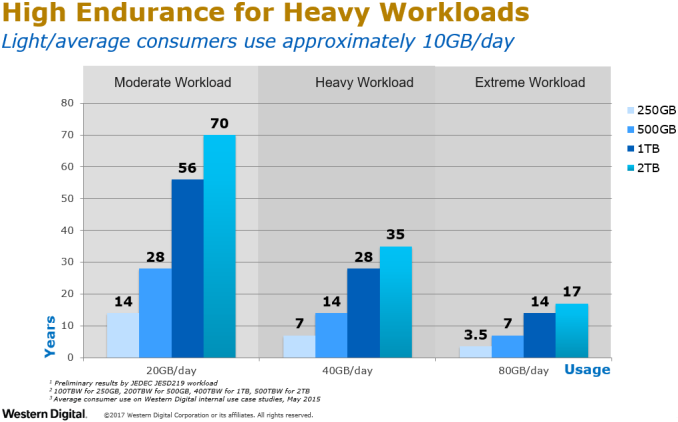
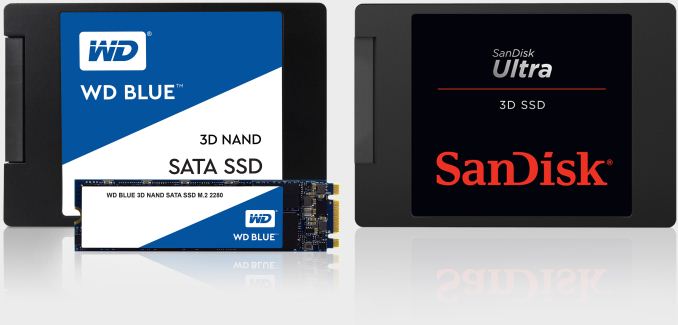

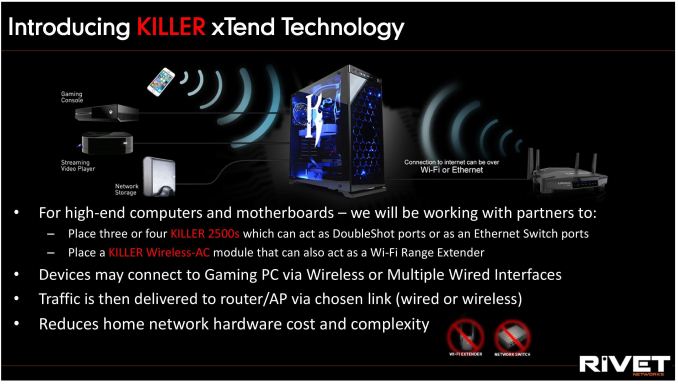
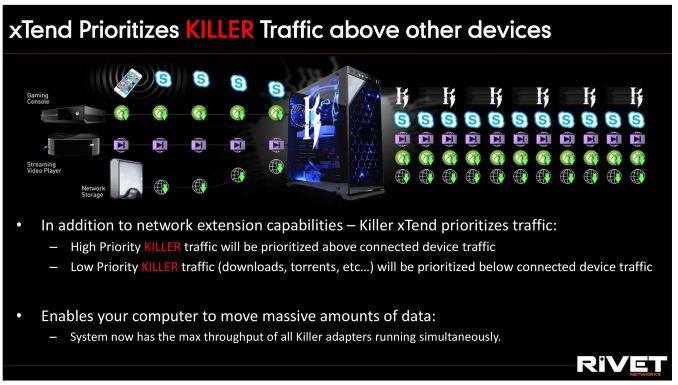

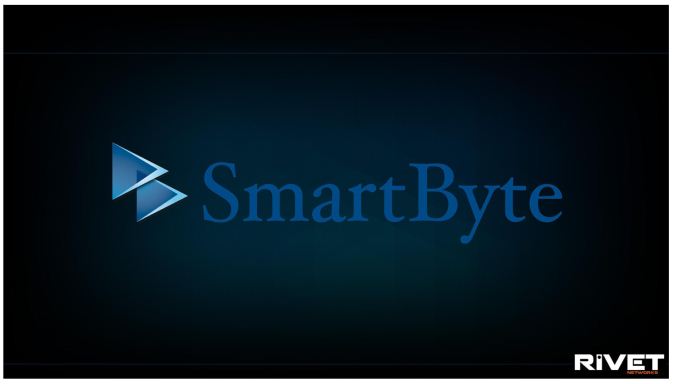


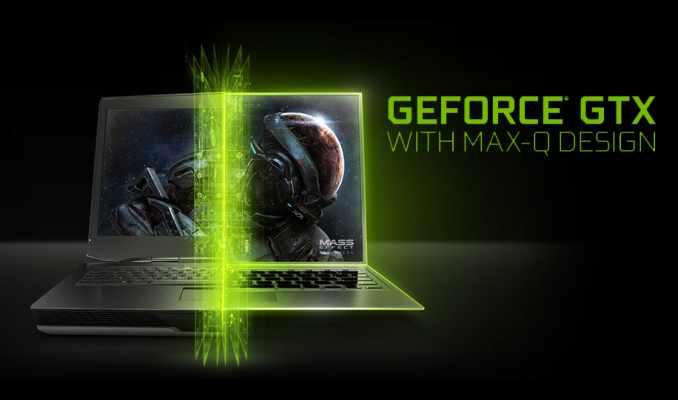
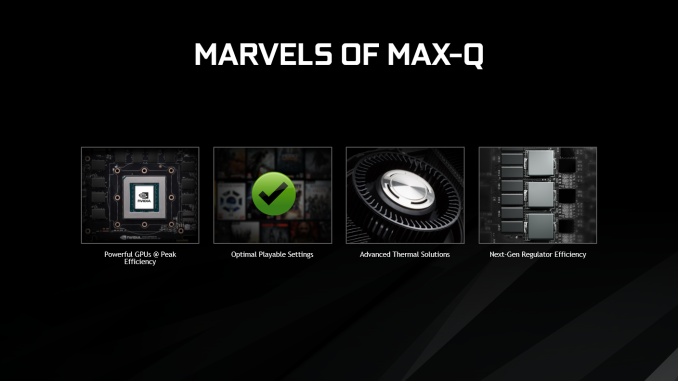

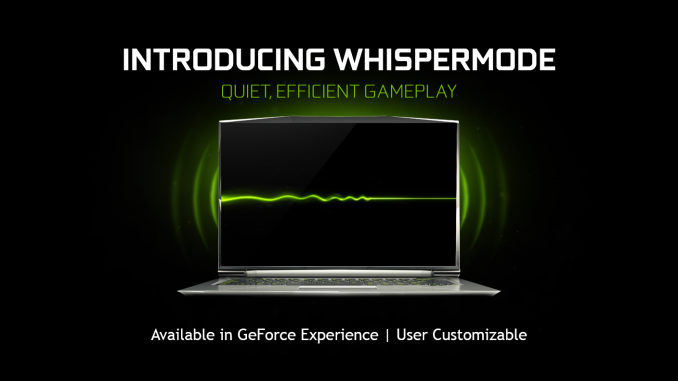
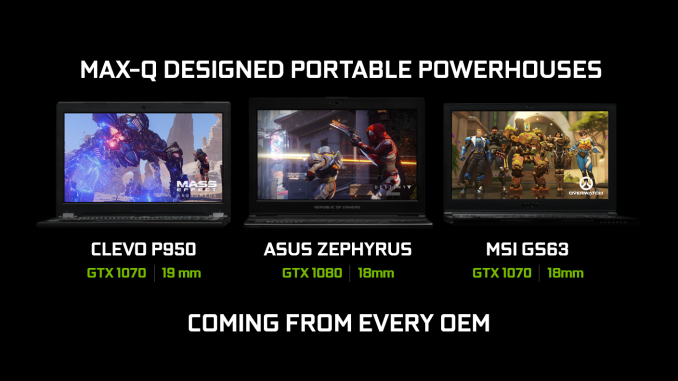
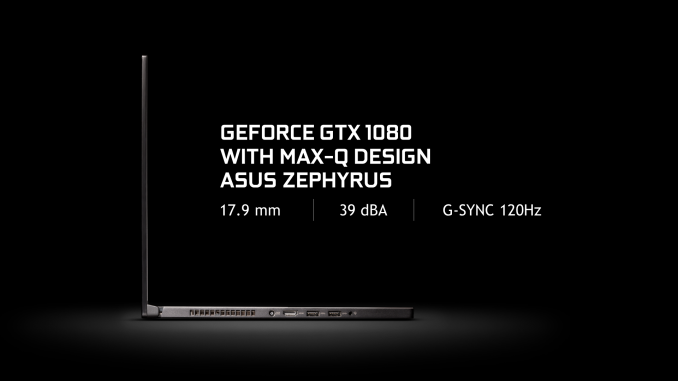
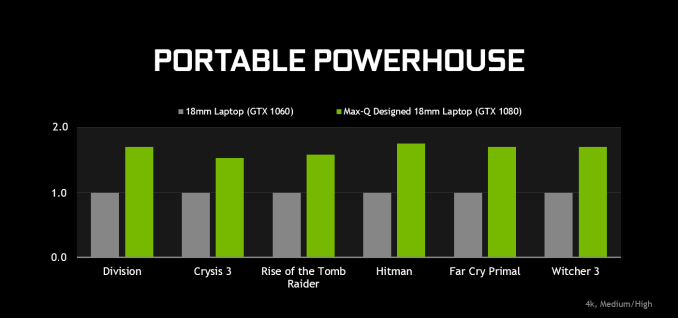


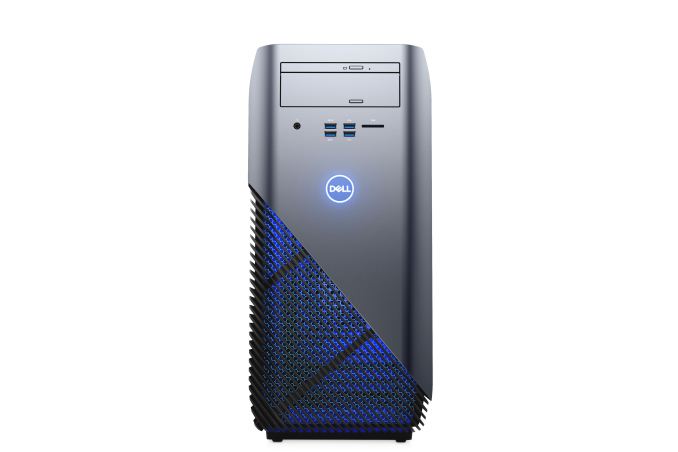

















Bookmarks